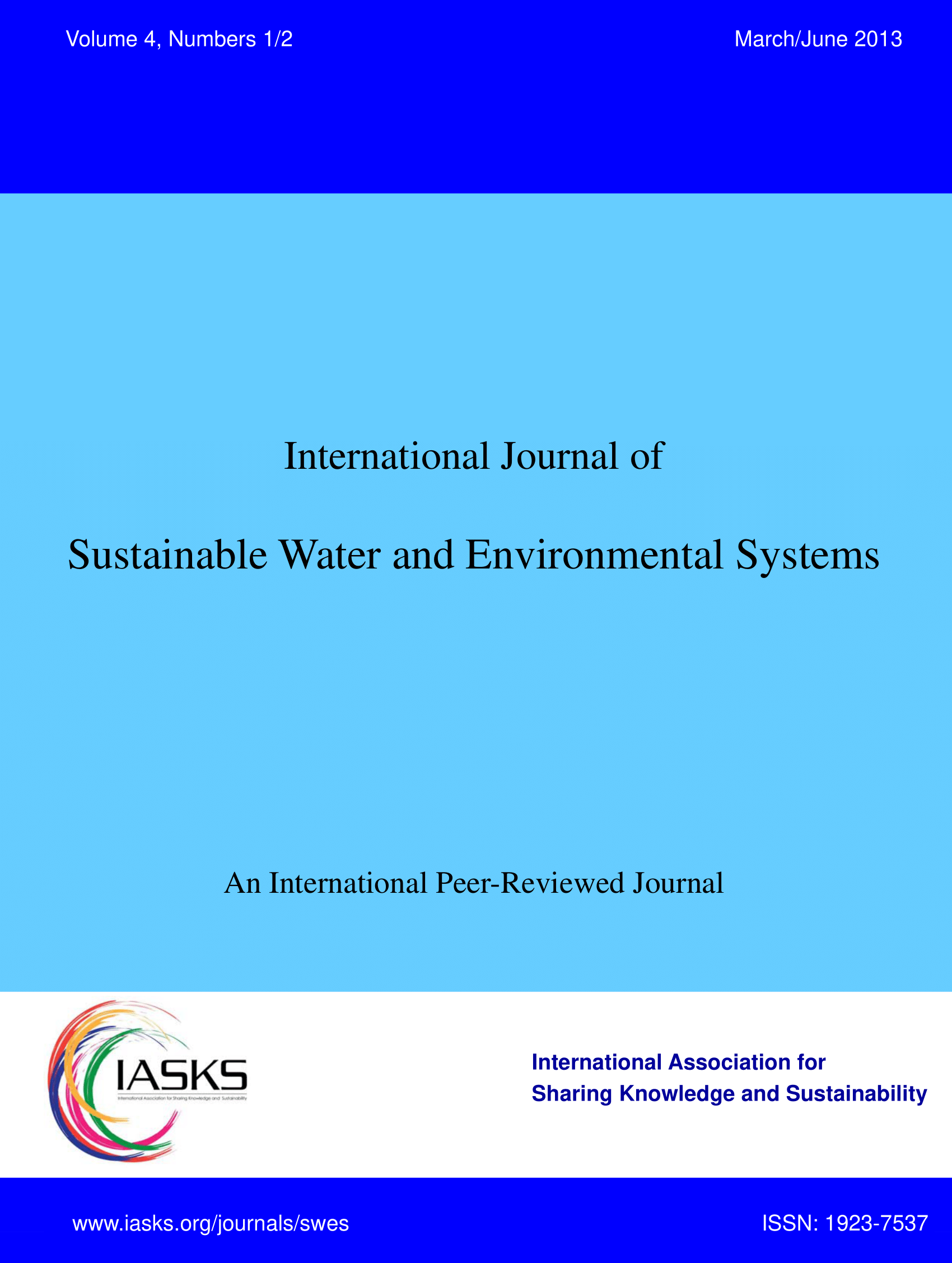volume-09-Issue 2 (2017)
Latest Articles
Key Issues/Challenges for Inland Water Transportation Network in India
SWES, volume-09, Issue 2 (2017) , PP 75 - 81
Published: 13 Nov 2017
by S. Praveen, J. Jegan from M.E (Construction Engineering & Management), Department of Civil Engineering, James College of Engineering & Technology, Nagercoil, Tamil Nadu, India, Professor & Head, Department of Civil Engineering, University College of Engineering Ramanathapuram, Tamil Nadu, India
Abstract: The authors explore transport and trade as two broad service sectors of inland water resources. An attempt is made to find out the key issues and challenges from this sector with the evolving understanding of Indian inland water transportation system. The paper explains the background of inland water transport sector in India along with the discussion of issues and challenges faced by the same. The authors state that co-operation and co-ordination between inter-state governments is a strategic element to expand the network of inland water transport system in India beyond state boundaries. Conclusively, the prospect of inland navigation looks promising, wherein issues on infrastructural gaps and institutional support are addressed suitably. read more... read less...
Keywords: Inland Water, Navigation, Transportation, National Waterways
Wastewater Treatment Analysis, Technology and Challenges in Sweden
SWES, volume-09, Issue 2 (2017) , PP 67 - 74
Published: 18 Oct 2017
by Otu, Ubong Etop from Department Of Marine Biology, Akwa Ibom State University P.M.B 1167, Uyo, Nigeria
Abstract: Wastewater treatment is an efficient technique that increases the reclamation and reuse of wastewater for other productive uses, thereby, reducing the demand for freshwater resources, conservation of aquatic habitat, and sustainable utilization of water resources. Concerns for wastewater in Sweden began in the 1930s with only mechanical treatment but efficiently implemented in the 1960s as a result of significant eutrophication observed in open waters such as the Baltic Sea. Although prevailing wastewater treatment is fairly efficient, there is need to upgrade and improve existing treatment facilities (constructed in the 1970s) to mitigate potentially degradation of hygienic conditions due to the estimated increase in Swedish population. Thus, this paper will critically analyse prevailing treatment of wastewater in Sweden, the technology used and possible challenges encountered in the process. Small scale treatment of wastewater particularly practiced for dwellings not connected to municipal treatment plant will be discussed including sludge management in Sweden. The report further presented the significant issues including regulations, challenges, health hazards and constraints associated with wastewater treatment and reclamation. In addition, background information relating to potential technology to meet future wastewater treatment in Sweden were highlighted because current wastewater treatment facilities were constructed in the 1970s to provide services to Swedish population at that time. read more... read less...
Keywords: Water, Wastewater treatment, Grey wastewater, Sludge Management
Soil and Water Conservation in Thika-Chania catchment, Kenya
SWES, volume-09, Issue 2 (2017) , PP 59 - 65
Published: 04 Sep 2017
by Gathagu John Ng’ang’a, Mainya Johnstone Isiah, Oduor Brian Omondi, Khaldoon A. Mourad from Pan African University Institute for water and Energy Sciences, Tlemcen, Algeria, Center for Middle Eastern Studies, Lund University, Lund, 22100
Abstract: Soil and water conservation measures are widely practiced in Kenya to tackle the degradation of the ecosystems and to improve land productivity. Local government and NGOs have developed programs and campaigns about soil and water conservation measures. The aim of this study is to assess the need for soil and water conservation measures in Thika- Chania catchment by conducting a household survey using QuickTap Survey software. A total of 200 respondents were successfully interviewed and results analyzed in SPSS program. GIS tools were also used to do a classification of slopes in the study area. Results indicate that more than 90% of the people in the catchment area are farmers. In the recent years, 50% of the respondents have noted a decline in the vegetation. During the rain seasons, the intensity of color in the local rivers due to sediments have been observed to increase by 75% of the respondent while 9% said there was no change. More than 70% of the respondents indicated that the water levels have been on the declining trend especially during the low flows. Terraces and grass strips were the common soil and water conservation measures although some of them were severely degraded. We concluded that there is an immediate need to implement soil and water conservation measures in the catchment to enhance and restore the optimum functioning of the ecosystems. Capacity building and frequent extension services are needed to increase awareness on the impacts of the respective conservation methods. Incentives programs need to be established to encourage more farmers to participate in conserving and protecting their lands from degradation. read more... read less...
Keywords: Baseline survey, soil and water conservation, capacity building, degradation.

